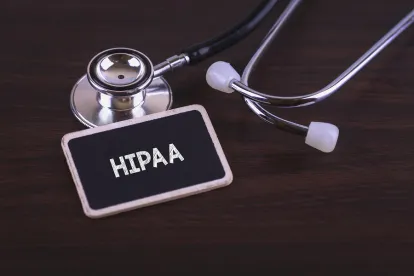On June 26, 2019, the Department of Health and Human Services Office for Civil Rights (OCR) issued two new FAQs that clarify:
-
The parameters around covered entities sharing protected health information (PHI) for a recipient covered entity’s health care operations; and
-
That once a covered entity receives PHI under HIPAA, the recipient covered entity may use and disclose it without individual authorization in any way permitted by HIPAA (even if different than the reason the covered entity initially received the PHI).
These FAQs, although focused on health plans, clarify for all covered entities the types of disclosures of PHI that are permitted for a recipient covered entity’s health care operations and that a covered entity is not restricted by HIPAA to only using and disclosing PHI for the purpose it was initially received.
FAQ 1: Disclosures for the Recipient’s Health Care Operations
The first new FAQ addresses the ability of one covered entity to disclose PHI to another covered entity for the recipient covered entity’s health care operations. Covered entities increasingly seek to share PHI for health care operations purposes in today’s interconnected world and HIPAA’s parameters around such disclosures have historically been misunderstood.
HIPAA permits a covered entity to disclose PHI to another covered entity for the recipient’s health care operations activities, if:
-
Each covered entity either has or had a relationship with the individual whose PHI is being requested;
-
The PHI pertains to such relationship; and
-
The disclosure is for a purpose listed in paragraph (1) or (2) of the definition of “health care operations” or for the purpose of health care fraud and abuse detection or compliance.
Paragraphs (1) and (2) of the definition of “health care operations” include the following activities:
-
Conducting quality assessment and improvement activities, including outcomes evaluation and development of clinical guidelines, provided that the obtaining of generalizable knowledge is not the primary purpose of any studies resulting from such activities; patient safety activities; population-based activities relating to improving health or reducing health care costs, protocol development, case management and care coordination, contacting of health care providers and patients with information about treatment alternatives; and related functions that do not include treatment.
-
Reviewing the competence or qualifications of health care professionals, evaluating practitioner and provider performance, health plan performance, conducting training programs in which students, trainees, or practitioners in areas of health care learn under supervision to practice or improve their skills as health care providers, training of non-health care professionals, accreditation, certification, licensing, or credentialing activities.
The OCR’s FAQ response clarifies that since case management and care coordination are among the activities listed in paragraph (1) of the definition of health care operations, if Health Plan A (a covered entity) provides health insurance to an individual who receives access to the provider network of another plan provided by Health Plan B, Health Plan A could disclose PHI to Health Plan B so that Health Plan B can coordinate the individual’s care, without individual authorization. The OCR included a reminder that the disclosures remain subject to HIPAA’s minimum necessary requirements.
FAQ 2: Uses and Disclosures by Recipient Covered Entity that Differ from Reason PHI was Received Initially
The second FAQ clarifies that if a covered entity has received PHI under HIPAA, the recipient covered entity can use and disclose PHI as permitted under HIPAA without individual authorization. This is the case even if the covered entity initially received the PHI for a different purpose. The FAQ then specifically addresses health plans using PHI they have received for another purpose for their own marketing communications.
HIPAA prohibits covered entities from using or disclosing an individual’s PHI for “marketing” purposes without an authorization, subject to limited exceptions. 45 C.F.R. § 164.508(a)(3). However, the definition of “marketing” excludes, among other things, communications to describe a health-related product or service (or payment for such product or service) that is provided by, or included in a plan of benefits of, the covered entity making the communication, unless the covered entity receives financial remuneration in exchange for making the communication.
For example, if Health Plan A discloses PHI to Health Plan B, Health Plan B can then use that PHI as permitted by HIPAA. HIPAA would permit Health Plan B to use the individual’s PHI to send communications about Health Plan B’s products and services (e.g., a health plan that may replace the individual’s current health plan), without individual authorization, assuming Health Plan B does not receive remuneration for sending the communication and complies with any applicable business associate agreements.
OCR’s FAQs are key to understanding how the OCR interprets HIPAA’s regulations. These new FAQs are likely to be heavily relied on by covered entities as they use and disclose PHI for care coordination, case management, and other purposes going forward.




 />i
/>i

